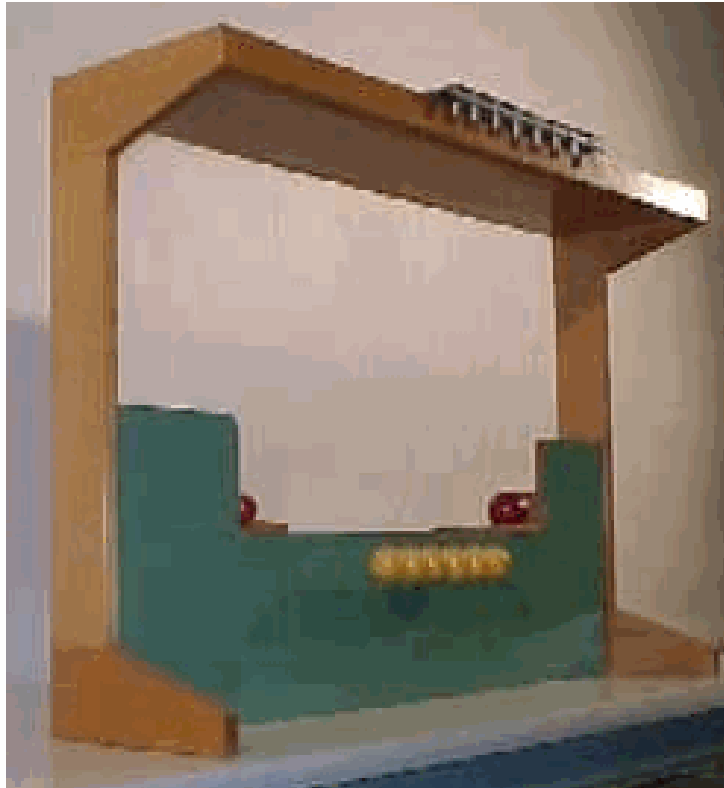07 Pulling a Slackened Rope#
Aim#
To show that only a short impulse is needed to make a student move.
Subjects#
1N20 (Conservation of Linear Momentum)
Diagram#

Fig. 176 .#
Equipment#
Two light carts, easily rolling.
Rope; \(l=10\mathrm{~m}\).
Two students.
Presentation#
The two students stand each on a cart. Between them is a slackened rope. Slowly they increase the tension in the rope and at a certain moment both carts start moving towards each other. The rope slackens again, but both carts keep on moving. (Eventually friction will stop their movement.)
When there is a clear mass difference between the two students, the difference in their respective speeds will be clearly observable.
Explanation#
The tension in the rope implies an impulse \(F \Delta t\) to the cart + student. This impulse changes the momentum \(p=m_{1} \Delta v_{1}\) of the cart + student. Applying Newton’s second law we can say: \(F \Delta t=m_{1} \Delta v_{1}\). When the initial velocity is zero, then \(m_{1}\) will move with \(v_{1}\) after the short impulse is over.
Applying ‘conservation of linear momentum’ to the whole system it is clear that the change of momentum of \(m_{2}\) is \(-\Delta p=m_{2} \Delta v_{2}\). \(v_{2}\) will be opposite to \(v_{1}\) and when \(m_{2}>m_{1}\), \(v_{2}\) will be lower than \(v_{1}\).
Sources#
Mansfield, M and O’Sullivan, C., Understanding physics, pag. 122-123
